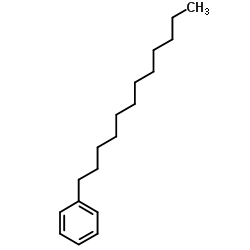Studies of the carcinogenesis and tumorigenesis of skin applications of dodecylbenzene on hairless mice.
O H Iversen
文献索引:Br. J. Ind. Med. 46(9) , 608-16, (1989)
全文:HTML全文
摘要
Dodecylbenzene in various concentrations, dissolved in acetone to a final volume of 50 microliters, was applied twice a week for 78 weeks to the back skin of hairless mice, with or without pretreatment with 51.2 micrograms 9,10-dimethyl-1,2-benzanthracene (DMBA). A negative control group was painted with acetone only and a positive control group was given a single application of 51.2 micrograms DMBA. A few tumours developed but there was no significant skin tumorigenicity--that is, occurrence of benign or malignant tumours--by acetone alone, or by 16% dodecylbenzene. More tumours developed in the group treated with 80% dodecylbenzene than in the group treated with acetone alone or with 16% dodecylbenzene, but there was no significant difference between treatments with 16% and 80% dodecylbenzene. There was only a suggestive increase in tumorigenesis in the group given 51.2 micrograms DMBA and thereafter painted with 40% dodecylbenzene twice a week compared with the group given 51.2 micrograms DMBA once. As regards histologically malignant tumours--that is, carcinogenicity--the group treated twice a week with 16% dodecylbenzene alone developed two skin malignancies, whereas only one carcinoma was observed in the group treated with 80% dodecylbenzene; both results are non-significant. There was only a suggestive increase in the occurrence of skin malignancies in the group treated with DMBA followed by 40% dodecylbenzene compared with that treated with DMBA alone. As regards other tumours, treatment with 80% dodecylbenzene led to six lymphomas in 56 animals, whereas the acetone control group had two lymphomas in 56 animals, a difference which is only suggestive. DMBA alone and DMBA followed by dodecylbenzene gave five and four lymphomas, respectively. There was no significant difference between controls and dodecylbenzene painted animals for lung adenomas or other tumours. A pronounced epidermal hyperplasia, an increase in melanin pigment ("blue spots"), pigment leakage, and skin ulcerations were seen, mainly after 80% dodecylbenzene and after DMBA followed by 40% dodecylbenzene. There was no obvious increase in amyloidosis after continual treatment with 80% dodecylbenzen. The results indicate that 80% dodecylbenzene alone is weakly tumorigenic but not carcinogenic in the skin of hairless mice, and it tends slightly to enhance DMBA initiated tumorigenesis and carcinogenesis. Dodecylbenzene may be a weak inducer of malignant lymphomas. It is a fairly strong skin irritant and may increase amyloidosis.
相关化合物
| 结构式 | 名称/CAS号 | 分子式 | 全部文献 |
|---|---|---|---|
 |
正十二烷基苯
CAS:123-01-3 |
C18H30 |
|
Broad spectrum analysis of polar and apolar organic compound...
2015-07-24 [J. Chromatogr. A. 1404 , 28-38, (2015)] |
|
In situsynthesis of di-n-butyll-tartrate–boric acid complex ...
2009-01-01 [J. Chromatogr. A. 1216(45) , 7932-40, (2009)] |
|
The degradation of 1-phenylalkanes by an oil-degrading strai...
1985-01-01 [Antonie van Leeuwenhoek 51(1) , 45-56, (1985)] |
|
Validation of an assay for the determination of levoglucosan...
2014-09-01 [Anal. Bioanal. Chem 406(22) , 5283-92, (2014)] |
|
Design and characterization of antimicrobial usnic acid load...
2015-01-01 [Mater. Sci. Eng. C. Mater. Biol. Appl. 52 , 72-81, (2015)] |